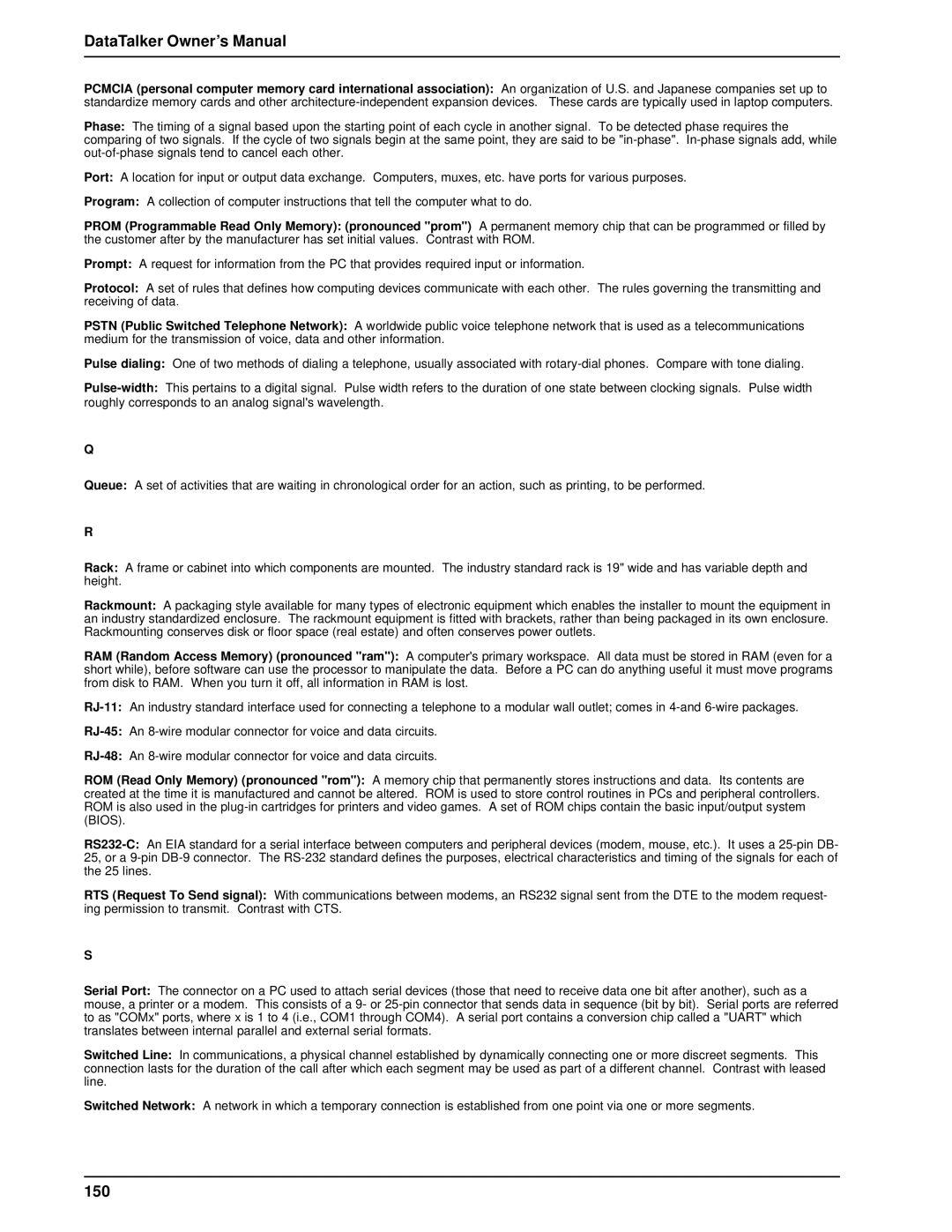
DataTalker Owner’s Manual
PCMCIA (personal computer memory card international association): An organization of U.S. and Japanese companies set up to standardize memory cards and other
Phase: The timing of a signal based upon the starting point of each cycle in another signal. To be detected phase requires the comparing of two signals. If the cycle of two signals begin at the same point, they are said to be
Port: A location for input or output data exchange. Computers, muxes, etc. have ports for various purposes.
Program: A collection of computer instructions that tell the computer what to do.
PROM (Programmable Read Only Memory): (pronounced "prom") A permanent memory chip that can be programmed or filled by the customer after by the manufacturer has set initial values. Contrast with ROM.
Prompt: A request for information from the PC that provides required input or information.
Protocol: A set of rules that defines how computing devices communicate with each other. The rules governing the transmitting and receiving of data.
PSTN (Public Switched Telephone Network): A worldwide public voice telephone network that is used as a telecommunications medium for the transmission of voice, data and other information.
Pulse dialing: One of two methods of dialing a telephone, usually associated with
Q
Queue: A set of activities that are waiting in chronological order for an action, such as printing, to be performed.
R
Rack: A frame or cabinet into which components are mounted. The industry standard rack is 19" wide and has variable depth and height.
Rackmount: A packaging style available for many types of electronic equipment which enables the installer to mount the equipment in an industry standardized enclosure. The rackmount equipment is fitted with brackets, rather than being packaged in its own enclosure. Rackmounting conserves disk or floor space (real estate) and often conserves power outlets.
RAM (Random Access Memory) (pronounced "ram"): A computer's primary workspace. All data must be stored in RAM (even for a short while), before software can use the processor to manipulate the data. Before a PC can do anything useful it must move programs from disk to RAM. When you turn it off, all information in RAM is lost.
ROM (Read Only Memory) (pronounced "rom"): A memory chip that permanently stores instructions and data. Its contents are created at the time it is manufactured and cannot be altered. ROM is used to store control routines in PCs and peripheral controllers. ROM is also used in the
RTS (Request To Send signal): With communications between modems, an RS232 signal sent from the DTE to the modem request- ing permission to transmit. Contrast with CTS.
S
Serial Port: The connector on a PC used to attach serial devices (those that need to receive data one bit after another), such as a mouse, a printer or a modem. This consists of a 9- or
Switched Line: In communications, a physical channel established by dynamically connecting one or more discreet segments. This connection lasts for the duration of the call after which each segment may be used as part of a different channel. Contrast with leased line.
Switched Network: A network in which a temporary connection is established from one point via one or more segments.
